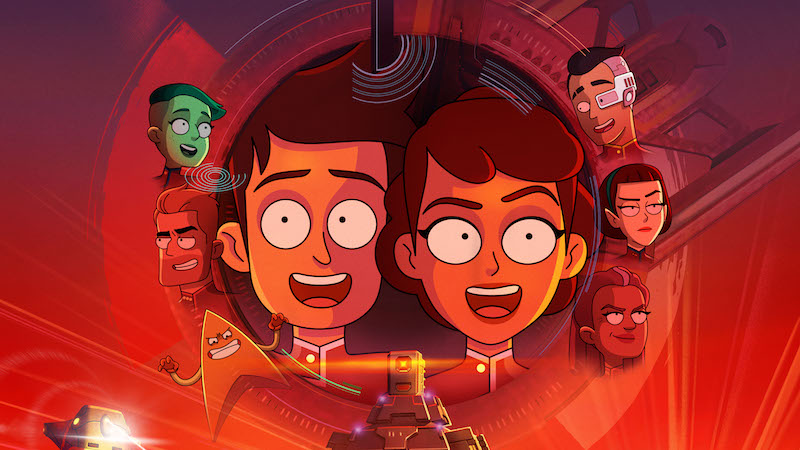Why are there actually over 600 distributions?
On August 25, 1991, a 21-year-old student in Helsinki announced that he was developing a free operating system. It was just a hobby project, it wouldn’t be a big deal. A few years later this hobby project developed into one of the most important projects in the history of computer technology.
Most operating systems are designed to be used for money. Linux, on the other hand, was based on the principle that software should be free and open from the start. Everyone should be able to use and modify them as they see fit. As of today there are several hundred Linux distributions, many of which are still being actively developed. The short answer to the question of why there are so many Linux distributions is arguably “tastes and needs are different”. There are different Linux distros for different purposes and requirements, such as different cars for families, singles, for camping holidays or for transporting bulky items.
Contents
An operating system needs a kernel
The long answer is a story of Unix Wars and free software. In 1969 Ken Thompson and Dennis Ritchie developed the Unix operating system. It quickly became very popular, both at universities and in companies. There was only one problem: the code was owned by AT&T. Eight years later, in 1977, employees at UC Berkeley developed their own Berkeley software distribution based on Unix. AT&T sued them and restricted Unix development. This time went down in history as the time of the Unix wars. A few years later, in 1983, Richard Stallmann started the GNU Project. It should be a free, open source replacement for the Unix operating system. Recreating a mammoth project like Unix, however, turned out to be no easy task. After all, Unix itself consists of hundreds of individual applications. Over the following years a number of applications were developed as part of the project, which today are often mentioned in the same breath as Linux, such as Bash or Emacs. However, the project was missing a crucial component: the OS kernel. A complete operating system needs a kernel – the component between hardware and software that is responsible for managing CPU and memory resources so that software can run.
Linus Torvalds happened to be working on his hobby project at exactly this time. By the way, Linux was originally supposed to be called Free Acts. But the FTP server admin didn’t like the name and changed it – apparently without asking Torvalds’ permission. The name stayed – until today. Initially, Linux was released under a proprietary license, with limited opportunities for commercial use. At the end of 1992 there was a license change. From now on Linux was under the GNU General Public License. The following year hundreds of developers took on the Linux project and began adapting it for the GNU environment. The beauty of the Linux kernel is that it offered a way to build custom operating systems that felt like Unix, just without the looming copyright lawsuit. This is how the first Linux distributions, including Softlanding and later Slackware, came into being in the first half of the 1990s.
All Linux distributions are based on the Linux kernel. They are complete operating systems including a number of software packages and libraries as well as a package manager for installing additional software. Many distros share the same standard UI. Popular UI options are Gnome, KDE Plasma, Mate, or Cinnamon. Today there are over 600 different Linux distributions, all of which have been adapted for different purposes. Some are intended for enterprise users, others for private users. Some distros only run on the server side, others are designed for desktop, mobile or embedded systems. Most distros have a developer and user community, each with their own philosophy. Many of the oldest distros are no longer maintained and are only considered as historical artifacts today. Slackware is an exception. The distro only received an update in 2016 and has produced a number of different variations.
One of the most important Linux distributions is Debian. Debian was created in 1993. It was developed by Ian Murdock. Funfact: The name of the distribution is made up of his first name and the first name of his ex-wife. The first official release, Debian Buzz 1.1, appeared in 1996. To date, all Debian versions are named after a character from Toy Story. A few years later, as part of Debian development, a tool called APT was created. APT stands for Advanced Package Tool. The package management system uses dpkg to manage software packages and consists of a program library and several command line programs, such as apt-get and apt-cache, which use this program library.
Debian is still one of the most popular Linux distributions to this day and the community is huge. The distro is considered minimalist and stable, so it is not too surprising that a whole range of other distributions are based on it, including such specialized versions as Raspberry PI OS or Steam OS. By far the most popular Debian descendant, however, is Ubuntu. Ubuntu was first published in 2004, behind the British company Canonical. There is a new version every six months. In addition to the semi-annual release cycle, Ubuntu follows a two-year LTS release cycle, which means that every two years there is a release with long-term support. Each version is named after an animal in combination with a word that begins with the same letter. For example, the last LTS version was called Focal Fossa. Ubuntu is considered very beginner-friendly and played a significant role in Linux ‘establishment as an OS for home use.
In recent years, however, the distro and the company behind it have been repeatedly promoted by Foss: inside – above all Richard Stallmann – criticized. On the one hand for the release of proprietary software, on the other hand for the transfer of user data to third-party companies.
Despite this criticism, Ubuntu is still very popular today. There are a number of variations of Ubuntu that are heavily based on the original, such as Xubuntu, Kubuntu or Lubuntu. Kubuntu, for example, is designed to make the switch from Windows to Linux particularly easy. Other noteworthy descendants of Ubuntu are, for example, Linux Mint, Peppermint or Pop OS.
In addition to Debian, there is another Linux distro with a similar number of modifications: Red Hat. Red Hat was first released in version 1.0 in 1994. This means that the distro is not quite as old as, for example, Slackware, but older than most other Linux distributions. The developer behind the operating system, Mark Ewing, and the company of the same name, Red Hat and his business partner Bob Young, introduced a business model based on developing and maintaining an open source OS with the Linux distro and making money through the Offer advice on integration as well as additional services. Today Red Hat has sales of billions of dollars. In 2019, Red Hat was acquired by software giant IBM for an eleven-digit amount.
Fun fact: Ewing graduated from Carnegie Mellon University in 1992. While at CMU, he was known for wearing a red Cornell lacrosse cap on the way between lectures. He was known for his computer skills, and anyone who needed help was referred to the guy in the red cap. Ewing and co-founder Bob Young named their first software after the headgear, and the Red Hat name stayed.
There are also a number of variations on Red Hat. Most of them are designed for enterprise users. Popular versions are, for example, Cent OS or Fedora, which should also be suitable for private use. Probably the most prominent follower of Fedora within the Linux community is apparently Torvalds himself.
What many older Linux distributions have in common is that they bring a lot of features that the average computer user doesn’t really need. The occupation of valuable storage space by such unneeded features as well as the resulting additional complexity were two arguments for many users that spoke against a switch to Linux for a long time – until the beginning of the nineties Linux distributions that focus on performance, minimalism and Focused on simplicity. One of them was Gentoo, released in 2000. Daniel Robbins, the developer behind Gentoo, had already started developing his Linux distribution in the mid-1990s, back then under the project name Enoch Linux. His goal was to create a minimalist distribution without binaries. By optimizing the compiler, he achieved a significant increase in speed compared to other distros, which led to a name change: Enoch Linux was renamed Gentoo, after the fastest penguin species.
His adjustments to the compiler have been adopted in all Linux distributions over time. Another is Arch Linux, which was first released in 2002. Arch has its own package manager called Pacman. The release cycle follows a so-called rolling release model, which means that smaller updates are released every six months that can be continuously updated in the operating system. Arch is also the basis for Manjaro, one of the most popular Linux distributions today. Independent Linux-based operating systems that are even more widespread, such as those discussed in more detail so far, are, for example, Android or Amazon’s Alpine Fire OS. For everyone, the Linux kernel is still the heart that developers can use and modify freely due to the underlying Foss principle.


